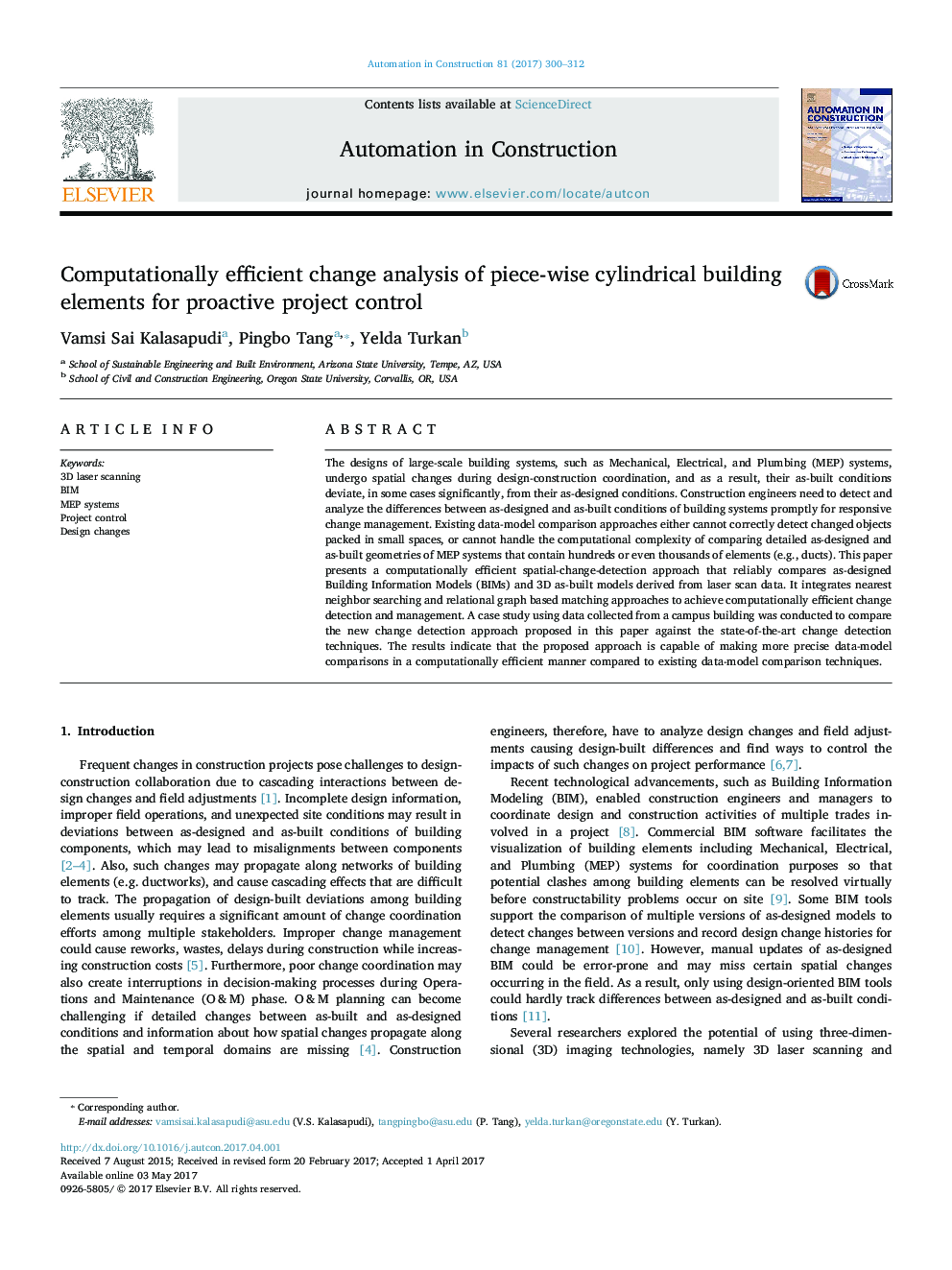| Article ID | Journal | Published Year | Pages | File Type |
|---|---|---|---|---|
| 6479025 | Automation in Construction | 2017 | 13 Pages |
â¢Spatial relationships between building objects assist reliable change detection.â¢Neighborhood searching has limitations when analyzing changes of packed pipes.â¢A relational-graph-based approach can augment neighborhood searching.â¢The hybrid approach can achieve both computational efficiency and precision.â¢A test case having 109 pipes shows the precision and efficiency of the new method.
The designs of large-scale building systems, such as Mechanical, Electrical, and Plumbing (MEP) systems, undergo spatial changes during design-construction coordination, and as a result, their as-built conditions deviate, in some cases significantly, from their as-designed conditions. Construction engineers need to detect and analyze the differences between as-designed and as-built conditions of building systems promptly for responsive change management. Existing data-model comparison approaches either cannot correctly detect changed objects packed in small spaces, or cannot handle the computational complexity of comparing detailed as-designed and as-built geometries of MEP systems that contain hundreds or even thousands of elements (e.g., ducts). This paper presents a computationally efficient spatial-change-detection approach that reliably compares as-designed Building Information Models (BIMs) and 3D as-built models derived from laser scan data. It integrates nearest neighbor searching and relational graph based matching approaches to achieve computationally efficient change detection and management. A case study using data collected from a campus building was conducted to compare the new change detection approach proposed in this paper against the state-of-the-art change detection techniques. The results indicate that the proposed approach is capable of making more precise data-model comparisons in a computationally efficient manner compared to existing data-model comparison techniques.
Graphical abstractRelational graph generation for spatial change detection and tolerance error redistribution.Download high-res image (172KB)Download full-size image
